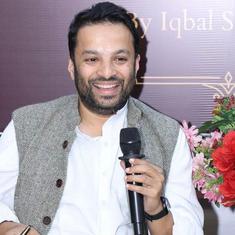On a serious note though, this report highlights how behind the times the DoT is. I can understand the Telecom Regulatory Authority of India failing on the net neutrality issue, but the DoT, that is supposed to have 13 floors of technical expertise in the Sanchar Bhavan, has hardly covered itself with glory with this report. What was expected from the DoT was a clear, concise, technology-led laying down of principles, definition and rules about net neutrality. Instead we have a document that is full of quotes – ranging from Vin Cerf, Peter Drucker, Alan Cohen (who is that?) – expounds on philosophical and management jargon and ends with this lame line:
The crux of the matter is that we need not hard code the definition of Net Neutrality but assimilate the core principles of Net Neutrality and shape the actions around them.
Really? That’s what the DoT's role is now? Instead of outlining clear and concise governance and policy rules in a fast changing technology world, you want to give us pep-talk?
Net Neutrality is a very simple concept – it is about creating an internet free of any gatekeepers, and is open, accessible and unhindered. It is an issue that is really very easy to understand and simple to define, legislate and regulate. It is of course going to be opposed by powerful telecommunication companies' interests and it is in this context that the committee's report needs to be seen. There are many parts of this committee's report that are identical to what some telecom companies have written in their response to the TRAI consultation paper.
Flawed attempts
The attempt to regulate Internet communications apps is flawed as it blandly accepts the repeated assertion by some companies of "level playing field" and "loss of revenues". It is revealing that DoT is ignoring robust data revenue growth of these companies – and that a circuit switched Public Land Mobile Telephony network and an app on the Internet are two different worlds. It is obviously not a coincidence that some Indian telecom companies are trying to further their investments and interests in the internet, including some who are trying to launch similar Voice Over Internet Protocol services and it doesn’t hurt their business interests to have the government tighten the screws on successful apps such as Whatsapp, Viber and others.
It is technically almost impossible to distinguish between domestic and international Internet telephony to support DoT's categorisation of "domestic" and "international" VOIPs. Also, the distinction between voice and non-voice content can’t be made without going into deep packet inspection which then flags off privacy concerns. All very impractical and unviable – and all this coming from the technical experts! At a basic level, the question to ask is: What constitutes the communication service? Will the telecom companies now demand level playing field between messaging services and SMS, or short messaging service text messages, quoting loss of revenues?
Unanswered questions
Serious questions arise, therefore, about this report’s independence and commitment to internet consumer rights – and indeed why it has avoided setting the rules for telecom companies to protect against their commercial temptation to gatekeeping. Or why it has not ventured into hard coding a definition. At the very least, the DoT could have hardcoded exceptions that would not be permitted. Instead of cracking down on zero rating, it is ambiguous about it and while it has come down hard on the Facebook-run internet.org, it has suggested that similar zero rating products offered by telecom operators should be dealt with on a case by case basis by TRAI.
To be fair, the report repeatedly trumpets that “core principles of Net Neutrality must be upheld” – of course, no one knows what these core principles are – and there is only a set of guidelines that is an annexure but not in the main body of the report. This report is a classic bureaucratic attempt to walk a middle path, but instead feels and reads like a compromised effort on the issue of net neutrality.
The duo of TRAI and DoT have been long complicit in some of the worst things that have happened in the telecom sector under their watch that range from scams, policy capture by telecom companies and consumer interests, like "call drops", being damned.
The telecom minister has clarified that this report is not the government's decision. So it is high time the government took one. If it is waiting for TRAI, then it must appoint its new chairman and issue a directive for it to complete its report in a time-bound manner. The government must then take a full and clear decision that places the internet and the consumer at its core. Given that there are currently three consultation processes underway – with the DoT, TRAI and the Standing Committee on IT – all deliberating on the issue, it is important that the public gets a clear idea with regard to the timelines and milestones for each. The DoT report is the first indication of the government’s opinion on central issues concerning Net Neutrality. Unfortunately, it has taken on a confused and conciliatory tone that has left those following this debate confused and wary.
Rajeev Chandrasekhar is Member of Parliament and a former telecom entrepreneur.










